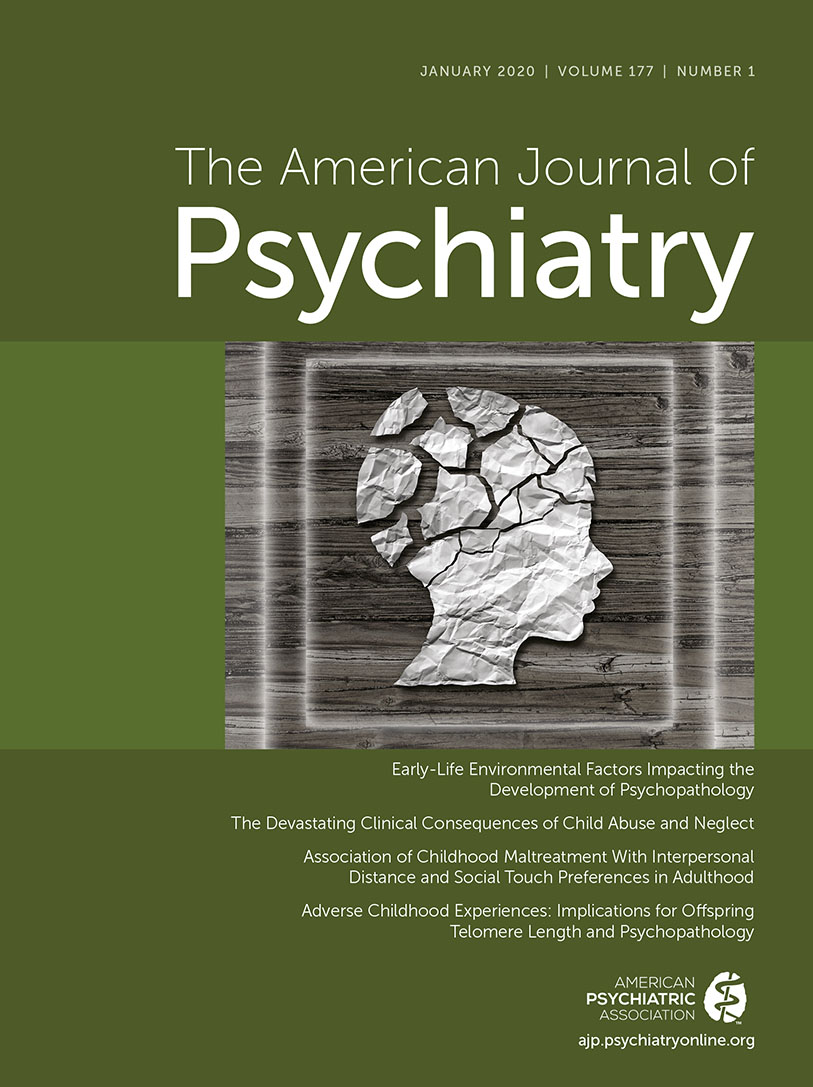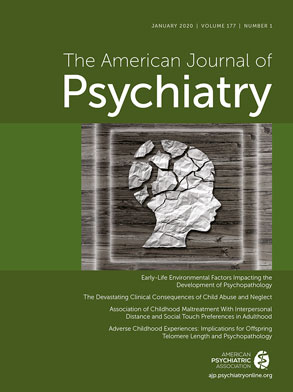There has been growing scientific interest in telomere biology over the 35 years since its fundamental mechanisms were deciphered (
1). Telomeres, the finely regulated protective caps at the tips of our chromosomes, play a critical role in aging, from yeast to humans. Telomeres are made of long, winding strands of repeat sequences of noncoding DNA, covered with protective proteins. Although their regulation and functions are complex, we can summarize their actions related to cell survival: they shorten with cell division and with exposure to biochemical stressors, such as oxidative stress, and when they become critically short or damaged, there is DNA-damage signaling and a menu of actions in place, likely to protect the rest of the genome. The cell can no longer replicate and replenish tissue, and in fact becomes senescent, inflammatory, or apoptotic. Fortunately, the process of telomere shortening is regulated by several factors, mainly telomerase. Telomerase is the special ribonucleoprotein enzyme that can restore telomere length, adding back the base pairs, making telomere length a malleable marker of aging (
2).
Telomeres are good predictors of life span in some species, like birds, and poor predictors in rodents, which are born with very long telomeres. We are still trying to determine exactly how important telomeres are to the physical health, mental health, and life span of humans. So far, more progress has been made on the physical health compared with the mental health side. Unlike many other biomarkers, telomeres play a causal role in aging cells. Clinically short telomeres, caused, for example, by mutated telomerase, prematurely exhaust certain stem cells, contributing to diseases like aplastic anemia, lung fibrosis, and early death (
3). Additionally, having a higher genetic propensity for shorter telomeres, through commonly occurring genetic variants, predicts greater risk of heart disease and dementia. Meta-analyses show that shorter telomeres measured in blood in midlife (and typically not in the elderly years) predict greater risk for earlier mortality (
3,
4). However, it is safe to say that these effects of measured telomeres, and especially the effect sizes of purely genetic loadings for telomeres, while reliable across diverse samples, are small compared with other clinical risk factors (
5).
The importance of long, stable telomeres in relation to the health span makes it critical to understand the malleable nongenetic factors that shape telomere length. Shorter telomeres are reliably associated with psychiatric diseases, especially depression (
6). As reviewed elsewhere, there is now a strong translational research base demonstrating that distress (stressor exposure, stress-induced depression) precedes telomere shortening (
7). In terms of life span health, psychopathology often occurs early in adulthood and precedes and contributes to earlier biological aging and mortality (
8). It is also possible that impaired telomere biology precedes and plays a causal role in psychopathology, as people with telomere-related genetic disorders tend to have psychiatric disorders as well. We do not yet know whether telomeres predict mental health outcomes, although there are suggestions that short telomeres may precede depression (
9).
An exciting new discovery in the telomere field is that there are multiple pathways for intergenerational transmission of telomere length. Converging evidence suggests that telomere length is inherited not just through genetics but also through direct transmission of parental germline telomere length (an inheritance form resembling, but distinct from, classical epigenetics) (
10,
11) and secondly through prenatal programming exposure effects (
12). Telomere length in offspring reflects maternal mental and physical health, from both psychosocial and chemical exposures. Pregnant women exposed to risks such as stressful life events, sleep apnea, and air pollution tend to have offspring born with shorter telomeres, and this is potentially mediated in part through maternal oxidative stress and inflammation (
13,
14). Transmission of short telomeres may be highly relevant to understanding intergenerational transmission of disease risk, psychopathology, and the comorbidity of the two.
Adverse Childhood Experiences (ACEs) and Next-Generation Telomeres
The potential bidirectional relationship between telomeres and psychopathology just became more complicated, given the transgenerational transmission of each of these. The study by Esteves and colleagues (
15), published in this issue of the
Journal, leads us into new territory, forcing us to think deeply about both the methods and mechanisms of the telomere mental health relationships. This study examines novel relationships between maternal ACEs and offspring telomere length and whether the combination of these factors predicts infant risk for psychopathology.
The authors first ask whether ACEs in women lead to shorter telomeres in their offspring. Indeed, they found that maternal ACEs uniquely predict the telomere length of the infant. This calls for a serious consideration of the many potential mechanisms that could be involved. How can maternal ACEs affect offspring telomeres? This is a fascinating and important relationship but not a direct pathway by any means. The effects of ACEs on lifelong health within an individual alone are poorly understood and involve alterations in neural networks (including altered threat sensitivity and emotion regulation), how one perceives stressors, attachment schemas, and health behaviors. These changes create a risky neurobiobehavioral profile characterized by higher stress sensitivity throughout life. At the simplest and most parsimonious level, the relationship between ACEs and offspring telomere length might be through a prenatal programming effect of high levels of stress exposure. In this study, however, measures of prenatal stress did not mediate the effect of ACEs, leaving an open question regarding the mechanism.
In addition to the prenatal programming hypothesis, there can be direct telomere-epigenetic transmission. Chromosomes, together with their telomeres, are passed on to offspring through parental gametes. While ACEs and life span stress exposure are associated with shorter blood telomere length, it is not known whether, or to what extent, severe stress exposure also shortens gamete telomeres, or whether these cells are ultimately protected. If they are vulnerable to stress-induced shortening, there could be direct parental transmission of sperm or egg telomere shortness to offspring.
It is also possible that there are “grandmother” effects: a woman’s prenatal stress predicts shorter telomere length in her offspring, and theoretically prenatal stress would affect the baby’s telomeres in the gametes. That shortness can then be transmitted to the next generation (the grandchild) through direct telomere epigenetic-like transmission. We already know that this direct transmission of telomere length can occur with very short telomeres (
10) and with long telomeres (affecting both first and second generations) (
16). Thus, it is feasible that stress-related moderately shorter gamete telomeres are directly transmitted to future generations of offspring. If so, this has important implications and needs to be tested in intergenerational studies.
Is telomere length a harbinger for future psychopathology? And if so, is it also related to maternal transmission of risk for psychopathology in the offspring? Esteves and colleagues ask these questions, forcing the telomere field to consider a new level of complexity. There are multiple potential causal pathways between maternal preconception and prenatal factors and the child’s risk for psychopathology (e.g., maternal stressor exposure, maternal postnatal behavior and caregiving, and maternal epigenetic factors, including effects on telomere biology). So far, no studies have examined maternal risk on child outcomes using infant telomere attrition as a risk factor for later child well-being. However, Esteves and colleagues use it exactly in this way—as an independent risk factor or moderator for child mental health outcomes. They found that telomere attrition did not directly predict externalizing problems. Rather, in combination with high maternal ACEs, greater telomere attrition predicted an increased risk of child behavioral problems early in life, at 1.5 years old.
What does telomere attrition, in this case, indicate? Marker or mechanism? It is possible that telomere attrition might not be mechanistically linked but rather may reflect a vulnerable phenotype programmed by prenatal and preconception exposures. Taken together, high ACEs plus higher telomere attrition may more strongly indicate greater underlying biological chronic stress processes, such as higher oxidative stress, inflammation, and lower telomerase activity. This model is consistent with life history theory, in which greater early-life adversity accelerates development, leading to early puberty, which may have costs that are associated with earlier aging. If this were true, in this study, the highest risk group (those with ACEs and the fastest telomere attrition) should also have early puberty. No one has applied life history theory to understand telomere shortening in infancy and its consequences, although these relationships have been theorized (
17).
Implications and Future Directions for Future Generations
If childhood experience indeed leads to shorter telomeres of the next generation, this has critical implications for public health. Telomere length tends to track throughout life, and telomere length at birth or in early childhood is a powerful predictor of adult telomere length, although life span studies are needed (
18). However, this does not mean that interventions cannot help stabilize or slow telomere attrition, at least in the short-term, and there is growing support for lifestyle intervention effects in young, midlife, and older adults (
19–
21). We need more intervention research earlier in life, with multiple measures of telomere biology and other indices of aging.
The next generation of telomere studies will be the most exciting. Several institutes at the National Institutes of Health have recently prioritized funding directed toward enhancing the understanding of the measurement of telomeres, their sensitivity to different types of exposures, and their ability to predict later health outcomes. As part of this initiative, the National Institute on Aging (NIA) and the National Institute of Environmental Health Sciences have funded a Telomere Research Network to help guide the field in identifying gold-standard measurement protocols. Coincidentally, this is led by the senior author of the study by Esteves and colleagues, Stacy S. Drury, M.D., Ph.D., together with other leaders in the telomere field and in related fields such as environmental health.
Better measurement will enhance our ability to test changes in telomere biology over time within individuals, including during intervention studies. Increased funding and interdisciplinary collaboration will lead to more multilevel measures of the exposome (social, chemical, and environmental factors) and individual factors that affect telomeres. Advances in measurement of stress, to a more refined measurement of exposures versus responses, will be important, as advocated by the NIA stress measurement network (see Appendix 1 in the study by Epel and colleagues [
22]). In terms of ACEs, it will be important to distinguish between threat and deprivation, which have different effects, including that threat exposures differentially lead to accelerated aging (
23). Some of the most important studies will be longitudinal transgenerational cohort studies. This opens up the potential for “freezer studies”: use of stored whole blood or DNA from longitudinal cohort studies to facilitate discoveries. Integration of telomere length with other biomarkers of aging that are meaningful in youth, in studies that include both psychiatric and physical health monitoring, will lead to new discoveries relevant to understanding the rate of biological aging and allostatic load through the life span (
24).
Despite the complexity of the findings, and the speculative nature of identifying putative mechanisms, the implications of Esteves and colleagues’ findings are clear. As the authors state, there is an emerging picture of “strong support for the need to integrate a multigenerational life-course perspective into our understanding of the biopsychosocial etiology of mental illness.” We also need widespread screening for stressors across the life course and social context. This is already happening in California, where the surgeon general has initiated universal screening of ACEs in primary care, along with referrals and education such as lifestyle counseling. The effects of this screening will be important to evaluate.
Acknowledgments
The author thanks Drs. Elizabeth Blackburn, Jay Belsky, Sonja Entringer, Idan Shalev, and Ned Kalin for their editorial comments.

